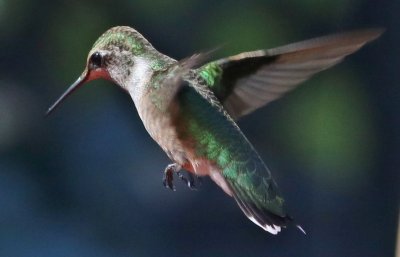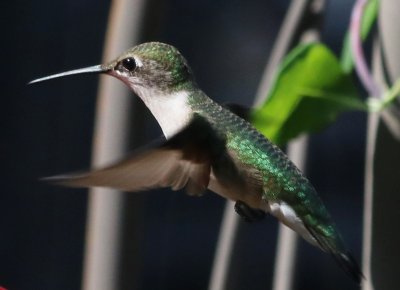siamese3
Brilliant_Rock
- Joined
- Jul 27, 2007
- Messages
- 1,033
Thanks, Red! There's just so many choices and I like the idea of a "real life" recommendation. I need to find something besides politics to immerse myself inI have this book and it is wonderful.
https://www.amazon.com/Understanding-Exposure-Fourth-Photographs-Camera/dp/1607748509/ref=pd_lpo_sbs_14_t_2?focal _encoding=UTF8&psc=1&refRID=P8JPQNM96DNDZ2AM33D3
After checking mine is a couple editions older than this one. But I still love it and will probably order this one too. Bryan Peterson is a god in the photography world.
Okay, how cool is that! Lucky you.You are welcome. My father, besides being a horse trainer, was a professional photographer taking pics for horse magazines.
You are welcome. My father, besides being a horse trainer, was a professional photographer taking pics for horse magazines.
That's so interesting! I bet he took some amazing photos of horses; they're such fascinating creatures!
Edited to add that I'm going to check out the book you recommended. Thanks!
Thanks, Red! There's just so many choices and I like the idea of a "real life" recommendation. I need to find something besides politics to immerse myself inI have a canon dslr and use it as a point and shoot but I am going to get a fixed focal point lens and start to figure it all out.
It was very cool df. I can remember as a kid going to "photo shoots" at some of the beautiful big ranches in Cali. It sounds funny to call them photo shoots but what else would you call them? LOL.
siamese3, are there any subjects in particular that you're interesting in photographing?
There's an endless list of subjects. I want to try lots of them (star trails, night skies, landscapes, macro, etc.). I like candid shots of people, but haven't done many so far.
My recommendation? Have fun. Don't expect to learn everything there is to know. In a week. In a year. In 10 years. Thank God! Imagine how boring life would be if things could be learned and mastered quickly or ever.
When reading my post, keep in mind that I'm new to the world of DSLRs. Hopefully, some of the experienced photographers will step in with comments - or corrections- to my 'statements of fact'.
Manual mode will allow you to individually change all the settings. There's no need to complicate your life by using this mode when you're starting out.
Shutter Priority (TV on Canon cameras) deals with the speed of movement of your subject. This is what I use most often with wildlife (and bird) photography because the subjects are usually moving. If your subject is fast-moving, you need a high shutter speed to freeze the action (unless you deliberately want a photo with blur to represent movement).
Aperature Priority (AV on Canon cameras) deals with depth-of-field (blurry background versus more of the background being in focus). It also pertains to the opening through which light gets into your camera. On an overcast day, you'll want a larger opening to allow as much light as possible into your camera. F-stops refers to the size of the blades that open and close. If the blades are small (small F-stop) then the opening will be larger. A visual would explain this more clearly; there's probably one in your book. Small F-stop = small blades = small depth-of-field. Small blades mean a large opening so more light can get in.
ISO is the camera's sensitivity to light. A high ISO (large ISO number) means highly sensitive and therefore captures more light; but the image will be more grainy. Increasing shutter speed will result in a higher ISO, so there's a balance or trade-off.
Start by thinking about your subject's movement. Is it still (like a turtle or flower) or moving (like a bird or animal). That helps determine your shutter speed.
Try using Shutter Priority, set your shutter speed, put the rest on 'auto' so the camera determines the setting, and take some photos. Check your results, read, google, and take more photos.
In addition to reading and still learning about camera settings, I read a couple of books on composition, including The Photographer's Eye: Composition and Design for Better Digital Photos by Michael Freeman (got it from the Library; there's probably lots of newer/other similar books).
Note: while writing the above, someone phoned, someone came to the door, and someone tried to have a conversation with me. If anything I wrote makes any sense at all, then good. If not, sorry!


Oh those are amazing! I love watching them. They are very territorial, so it's good that you have two feeders. I have a small hand held feeder that I got last year to see if I could train them to eat from it while I was holding it. Only problem is, that I forgot where I put it and never found it until fall
I am really enjoying this book, Red. Thanks for recommending it!I have this book and it is wonderful.
https://www.amazon.com/Understandin...coding=UTF8&psc=1&refRID=P8JPQNM96DNDZ2AM33D3
After checking mine is a couple editions older than this one. But I still love it and will probably order this one too. Bryan Peterson is a god in the photography world.
I am so glad. I am reading the new one too as I ordered it the same day I recommended it to you!I am really enjoying this book, Red. Thanks for recommending it!